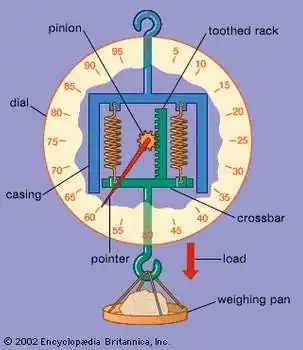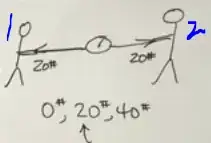The net force on the spring balance is zero. This means that the balance as a whole will not accelerate since ($F_{net} = ma$).
for 1st question I thought the balance will read zero force because they are two opposite forces of the same magnitude but it's wrong. the correct answer is 20N
Hmm.. let's take a look at the mechanism of a spring balance

You can see that only one end of the balance can move the spring and the pointer at the same time.
Assuming the load portion of the balance towards 2 (you can also take the other way) :
So when 1 and 2 both were trying to pull it by $20N$, the person 1 was only stopping the balance from accelerating in the direction of 2. But only because 1 was at the other end, the force of 2 ($20N$) was able to stretch the spring in the balance (without accelerating) and thus it should show the $20N$ mark. If 1 leaves, the balance will accelerate towards 2 without showing any results.
You can try this experiment at home. So you should know that if the other end of the balance is left free, then the balance will not measure anything. You need someone or something to hold the other end of the balance and this is what happens when you attach a balance with a free-falling body. The pointer shows zero deflection.
Hope it helps ☺️.

